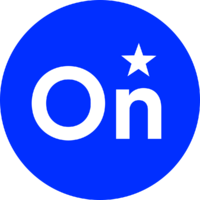General Motors (OnStar)
⚠️ Article status notice: This article has been marked as incomplete
This article needs additional work for its sourcing and verifiability to meet the wiki's Content Guidelines and be in line with our Mission Statement for comprehensive coverage of consumer protection issues. In particular:
- Has some useful information, but has some missing sections
This notice will be removed once the issue/s highlighted above have been addressed and sufficient documentation has been added to establish the systemic nature of these issues. Once you believe the article is ready to have its notice removed, visit the discord and post to the #appeals channel.
Learn more ▼
| Basic information | |
|---|---|
| Founded | 1908-09-16 |
| Legal Structure | Public |
| Industry | Automotive, Technology, Information Technology |
| Official website | https://www.gm.com |
General Motors (OnStar) is a multinational automotive manufacturing company and its subsidiary, OnStar, which provides in-vehicle security, emergency, and navigation services. This article assesses the company's consumer protection stance, with a primary focus on the accessibility of emergency 911 services for non-subscribers of the OnStar service.
Consumer-impact summary[edit | edit source]
Business model[edit | edit source]
- The company's business model for its OnStar service includes paywalling a critical emergency 'SOS' button, preventing non-subscribers from using it for its primary purpose of contacting emergency services.
Incidents[edit | edit source]
This is a list of all consumer-protection incidents this company is involved in. Any incidents not mentioned here can be found in the General Motors (OnStar) category.
Inaccessible Emergency 'SOS' Button (1996-Present)[edit | edit source]
This practice places a direct paywall on a critical, life-saving feature. The core of the issue rests on the classification of the OnStar system as a cellular communication device.[1] The Wireless Communications and Public Safety Act of 1999 (the "911 Act") mandates that mobile service providers must transmit all 911 calls to a public safety answering point, regardless of whether the caller has a subscription.[2] It has been argued that by preventing a direct connection to emergency services via its most prominent emergency button, OnStar's behavior for non-subscribers is inconsistent with the spirit of this federal law and the established public expectation for emergency communication devices.[3]
Products[edit | edit source]
- OnStar (1996): An in-vehicle telematics system. The primary consumer issue involves the paywalling of its dedicated emergency SOS button for non-subscribers.
See also[edit | edit source]
References[edit | edit source]
- ↑ Auto-Vlog. (2024, January 29). "Here's How To Call 911 With An INACTIVE OnStar System" [Video]. YouTube. Retrieved August 16, 2025, from https://www.youtube.com/watch?v=nM7cqDzchjg
- ↑ U.S. Congress. (1999). "Wireless Communications and Public Safety Act of 1999," Public Law 106-81, 106th Congress. Retrieved August 16, 2025, from https://www.congress.gov/bill/106th-congress/senate-bill/800
- ↑ Lopez, J. (2020, June 30). "OnStar Hands-Free Calling Will Be Sunset in 2022". GM Authority. Retrieved August 16, 2025, from https://gmauthority.com/blog/2020/06/onstar-hands-free-calling-will-be-sunset-in-2022/

